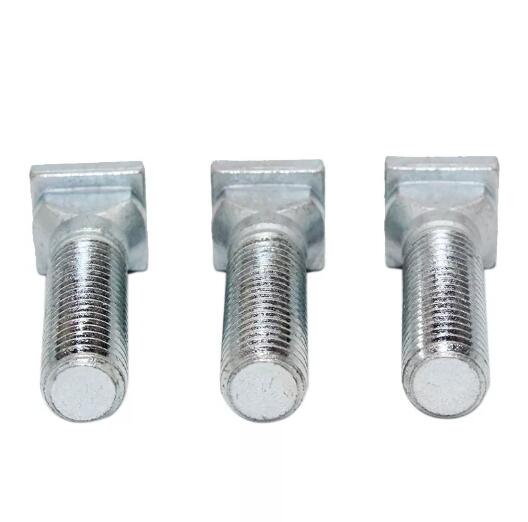Shielding Strength: Surface Finishes and Coatings on Stainless Steel T Bolts for Enhanced Environmental Performance
2023-12-18
Introduction:
Stainless steel T bolts, known for their durability and corrosion resistance, often undergo additional treatments to further enhance their performance in specific environments. Surface finishes and coatings play a crucial role in safeguarding T bolts against corrosion, wear, and other environmental challenges. In this blog, we'll delve into the world of surface finishes and coatings applied to stainless steel T bolts, exploring how these treatments contribute to their resilience in diverse settings.
1. Understanding Stainless Steel Corrosion Resistance:
Stainless steel inherently possesses corrosion resistance due to the presence of chromium, which forms a protective oxide layer on the surface. However, in certain environments, additional protection is needed to ensure optimal performance over an extended lifespan.
2. Passivation:
Passivation is a common surface treatment for stainless steel T bolts. It involves removing free iron from the surface through a chemical process, promoting the formation of a passive oxide layer. Passivation enhances the bolts' corrosion resistance, particularly in environments where exposure to harsh chemicals or corrosive substances is prevalent.
3. Electroplating:
Electroplating is a process where a thin layer of metal, such as zinc or nickel, is deposited onto the surface of the stainless steel T bolts. This layer acts as a sacrificial coating, providing an additional barrier against corrosion. Zinc-plated T bolts, for example, are often used in outdoor applications to protect against atmospheric corrosion.
4. Hot-Dip Galvanizing:
Hot-dip galvanizing involves immersing the stainless steel T bolts in molten zinc. This process results in a thick, durable coating that provides exceptional corrosion protection. T bolts with hot-dip galvanized coatings are commonly used in outdoor and marine applications where exposure to harsh weather conditions is a concern.
5. Coatings with Organic Materials:
T bolts may also receive coatings with organic materials such as epoxy or polymer. These coatings provide a protective layer that helps resist corrosion and provides additional protection against abrasion and impact.
6. PVD (Physical Vapor Deposition) Coatings:
PVD coatings, such as titanium nitride or chromium nitride, are applied through a vacuum deposition process. These coatings enhance both the aesthetic appeal and the corrosion resistance of stainless steel T bolts. PVD coatings are often chosen for decorative or high-end applications.
7. Powder Coating:
Powder coating involves applying a dry powder to the surface of T bolts, which is then cured under heat. This creates a durable and uniform finish that offers protection against corrosion, chemicals, and UV exposure. Powder-coated T bolts are commonly used in applications where a specific color or aesthetic finish is desired.
8. Chromate Conversion Coating:
Chromate conversion coatings, often applied as a thin layer, provide additional corrosion protection to stainless steel T bolts. These coatings are commonly used in aerospace and military applications, where stringent corrosion resistance standards must be met.
Conclusion:
Surface finishes and coatings on stainless steel T bolts serve as a shield, enhancing their performance and extending their lifespan in challenging environments. Whether facing the salt-laden air of marine applications, the corrosive agents in chemical plants, or the wear and tear of outdoor exposure, these treatments ensure that T bolts remain steadfast in their role as essential fasteners across a spectrum of industries. As technology and materials science advance, the evolution of surface finishes continues to contribute to the resilience and versatility of stainless steel T bolts in the ever-changing landscape of engineering and construction.



